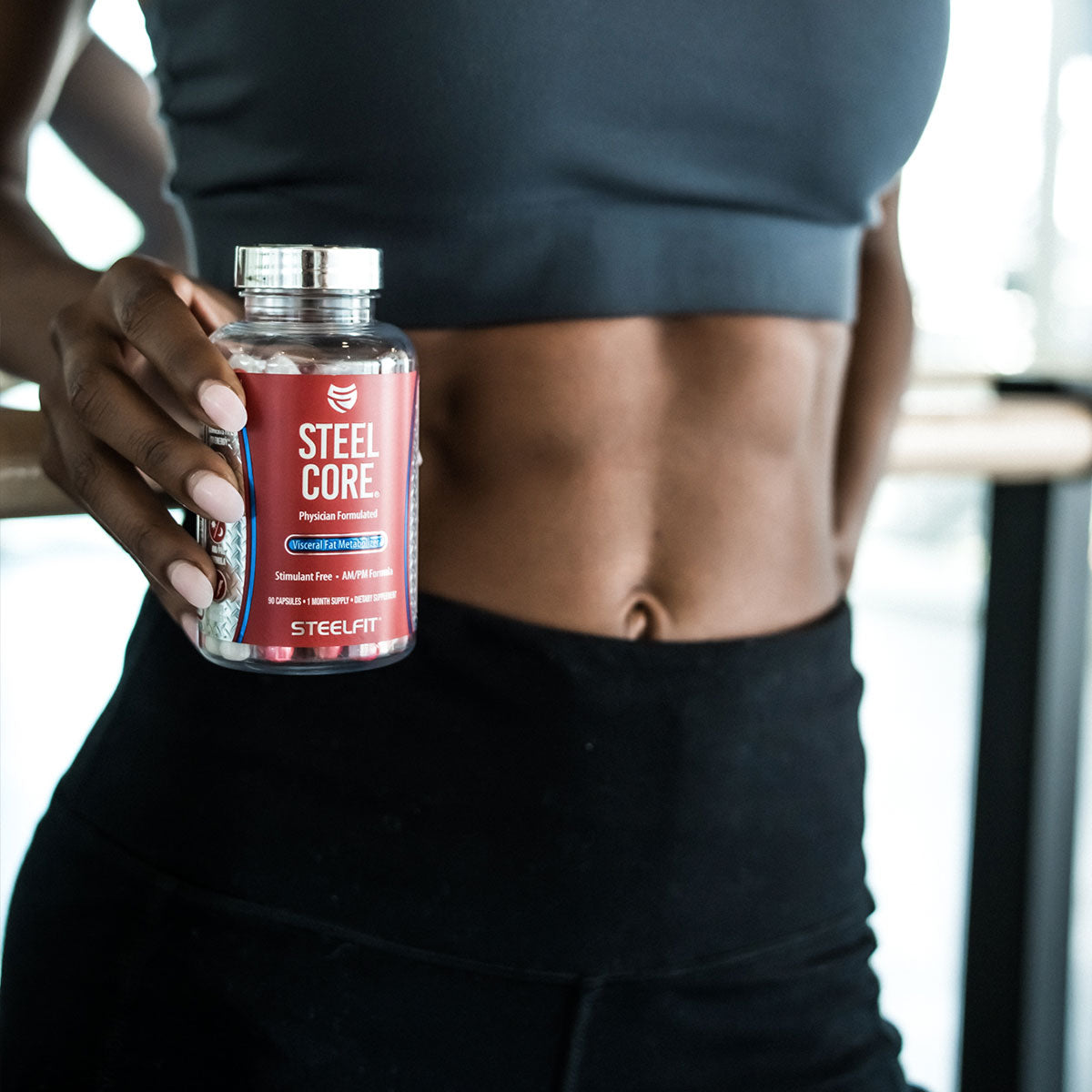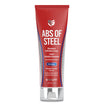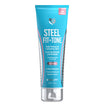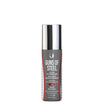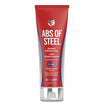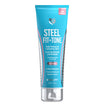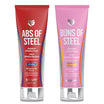Protein powder is quite frequently the very first supplement (outside of a multivitamin) you purchased when starting to workout. You were told protein was important for building muscles, and you were also probably told that whey protein is one of the best proteins to take for building muscle and recovering from training.
On the surface, protein powders seem pretty simple and straightforward. They include one or more forms of powdered protein (i.e. whey, casein, egg, milk, pea, etc.) along with salt, artificial sweeteners, and one or two thickeners and stabilizers. On top of that, using them couldn’t be any simpler. Simply add water, milk, or whatever liquid you want, shake, drink, and BOOM! You’ve got your quick fix of protein to support muscle recovery and growth.
But, have you ever given any thought to what your actual protein is made of?
More specifically, the individual amino acids that make up your favorite whey protein powder?
Probably not, and there’s nothing wrong with that. That’s where this quick reference guide comes in.
Ahead, we’ll explain what each of the different amino acids that go into making a complete whey protein powder is, and how they support your athletic goals.
But first, let’s make a quick distinction…
Naturally Occurring Amino Acids vs Spiked Protein Powders
While this issue isn’t nearly as much of a problem as it was 5-10 years ago, it still exists -- spiked protein powders. What we mean by “spiked” is that extra free form amino acids, such as L-Glutamine, L-Taurine, or Creatine, were added in addition to whey protein in countless mass market protein powders.
These added amino acids artificially inflated the protein count on many protein powders, meaning that you weren’t really getting as much protein as the label claimed.
How can you tell if your protein is spiked?
Take a look at the ingredients panel and if you see a bunch of free-form amino acids listed before or after the whey protein, chances are pretty good that it’s spiked.
Now, the amino acids that we’re about to discuss below are the ones naturally occurring in whey protein, they’re not separate ones added to artificially enhance the protein content. Most protein powders will list which amino acids are naturally occurring in their whey protein powder on the side of the tub, but few people rarely know what those amino acids do, outside of the BCAAs, and that brings us back to the point of this article -- a close up look at the individual amino acids in your whey protein powder.
So, let’s get to it!
The Amino Acids in Whey Protein
Whole food proteins, such as whey protein, chicken, steak, etc., are made from a combination of essential amino acids (EAA), conditional amino acids (CAA) and nonessential amino acids (NAA).
Essential Amino Acids are those that the body cannot synthesize on its own and they must be obtained from the diet. Nonessential Amino Acids are those that the body can produce from other essential amino acids, carbohydrates, and fats. Conditional Amino Acids can usually be synthesized by the human body; however, under certain conditions like illness or stress the body might not be able or might be limited in the ability to synthesize them.
What about BCAAs (branched-chain amino acids)?
The three BCAAs (leucine, isoleucine, and valine) are a special subcategory of the essential amino acids, that serves as nitrogen carriers, which assist muscles in creating other amino acids required for anabolism (muscle growth).
With all of that squared away, let’s learn a little more about the amino acids in your whey protein powder:
Alanine (NAA): Not to be confused with the beta alanine, alanine is a nonessential amino acid that plays a critical role in glucose production and blood sugar regulation. Alanine also supports optimal functioning of the immune system as well as kidney stone prevention.*
Arginine (CAA): The most well-known function of arginine is to serve as the substrate for the production of nitric oxide, a powerful vasodilator that enhances blood flow and pumps during training and supports cardiovascular function. Arginine also plays a role in the healthy functioning of the pituitary gland and works with two other amino acids in L-Ornithine and phenylalanine.
Aspartic Acid (NAA): Aspartic acid serves a key role in the Krebs Cycle (TCA cycle) that provides energy to the body through its production of ATP (adenosine triphosphate). This nonessential amino acid is also needed for the production of immunoglobulins, antibodies, and DNA. In case you weren’t aware, immunoglobulins and antibodies are responsible for recognizing, binding, and eventually destroying harmful viruses and bacteria that invade the body.*
Cystine (CAA): Synthesized in the liver from the essential amino acid methionine, cysteine fulfills several important functions in the body. First and foremost, cysteine is needed for the production of glutathione, one of the most powerful antioxidants in the body. This amino acid also helps slow down the aging process, and some research indicates it may be helpful in preventing dementia and multiple sclerosis.*
Glutamic Acid (CAA): Glutamic acid belongs to the same family of amino acids as L-Glutamine, the most abundant amino acid in the body. Glutamic acid plays a key role in immune function and digestion as well as serving as an important excitatory neurotransmitter in the brain.*
Glycine (NAA): Glycine is the smallest and simplest of the 20+ amino acids found in the human body and the second most abundant found in human proteins and enzymes. Formed in the liver from serine and threonine, glycine plays an important role in the central nervous system and the digestive system and is needed for the production of many important acids including nucleic acid, bile acids, and creatine phosphate.*
Histidine (CAA): Histidine is an aromatic amino acid used to synthesize proteins and affects numerous metabolic reactions in the body. It also regulates the pH value of the blood and helps form the myelin sheath, a protective coating that surrounds all nerve cells and protects them from damage.*
Isoleucine (EAA): The “weaker” and younger brother of leucine, Isoleucine stimulates muscle protein synthesis in the body, though not quite as powerfully as leucine does. However, where isoleucine does stand out is its role in enhancing glucose uptake by skeletal muscle as well as glucose utilization during intense exercise.*
Leucine (EAA): The “king” of amino acids, leucine is most well known for being the most powerful stimulator of the mTOR pathway in the body, which drives muscle protein synthesis.
Lysine (EAA): Lysine is needed for the production of antibodies, and has been found to be beneficial for protecting against the herpes virus. Additionally, lysine is also needed for the production of carnitine – a substance that helps the body use fat for energy. This essential amino acid also aids calcium absorption and is needed for protein synthesis.*
Methionine (EAA): Methionine is vital to the production of L-Cysteine, an incredibly potent antioxidant that combats oxidative stress induced by intense training. This essential amino acid also aids the liver with the digestion of fats and serves as a “building block” for the production of carnitine, adrenaline, choline, and melatonin.*
Phenylalanine (EAA): A precursor to tyrosine, phenylalanine is important in the synthesis of the important neurotransmitters. Due to this amino acid’s role in neurotransmission, phenylalanine has been investigated as a possible treatment for depression and several other illnesses including multiple sclerosis, Parkinson’s disease, and ADD.*
Proline (CAA): Manufactured in the liver from ornithine, glutamine, and glutamate, proline is a secondary amino acid that is one of the primary amino acids used to generate collagen, the fundamental protein of skin, bones, ligaments, and tendons. This amino acid also fortifies the artery walls and protects the endothelium layer, highlighting its importance in maintaining cardiovascular health.*
Serine (NAA): Formed from glycine, serine plays a central role in the proper functioning of the central nervous system and production of antibodies. It is also required for the production of phospholipids used in cell production. To top it off, this amino acid also serves a role in the function of DNA and RNA, fat metabolism, and muscle formation.*
Threonine (EAA): A precursor to glycine and serine, threonine is essential for protein synthesis, and it also supports proper functioning of the central nervous, immune, digestive, and skeletal muscle systems of the body. Threonine is needed to produce antibodies, which bolster the immune system, and the mucus gel layer that covers the digestive tract.*
Tryptophan (EAA): Tryptophan plays a critical crucial role in lifting mood, as the uses this amino acid to generate serotonin, one of the “happy hormones”. Another important function of this essential amino acid is that it supports the synthesis of niacin, an essential B vitamin involved in energy production.
Tyrosine (CAA): Tyrosine is an incredibly important amino acid affecting mood, motivation, and reward. Moreover, tyrosine also plays a role in regulating pain sensitivity, stress, and appetite.*
Valine (EAA): The final component of the trio of BCAAs, valine is the least studied of the lot. As one of the BCAAs, valine helps drive muscle protein synthesis and is essential for glycogen synthesis in muscle tissue as well as energy conversion. On top of that, valine also has a supporting role in the proper cognitive function and immune system function.*
Takeaway
Protein is essential for building muscle, and when you’re looking for one of the best forms of protein to aid you in your fitness journey, there’s no better place to look than whey. It’s packed full of all the amino acids you need to repair, recover, and grow bigger and stronger. Next time you pick up your favorite tub of protein, see what amino acids it lists, and use this guide to help understand all of what goes into this fitness-lifestyle favorite.
References
- Saccà L, Trimarco B, Perez G, Rengo F. Studies on the Mechanism Underlying the Influence of Alanine Infusion on Glucose Dynamics in the Dog. Diabetes. 1977;26(4):262 LP-270. http://diabetes.diabetesjournals.org/content/26/4/262.abstract.
- Bode-Böger SM, Böger RH, Alfke H, et al. l-Arginine Induces Nitric Oxide–Dependent Vasodilation in Patients With Critical Limb Ischemia. Circulation. 1996;93(1):85 LP-90. http://circ.ahajournals.org/content/93/1/85.abstract.
- Wang H, Thomas C, Christensen E. OF ACETATE ACID AND PYRUVATE IN YEAST. J. Biol. Chem. 1952, 197:663-667.
- Stanislaus R, Gilg AG, Singh AK, Singh I. N-acetyl-L-cysteine ameliorates the inflammatory disease process in experimental autoimmune encephalomyelitis in Lewis rats. Journal of Autoimmune Diseases. 2005;2:4. doi:10.1186/1740-2557-2-4.
- Marmo, E. (1988), L‐glutamic acid as a neurotransmitter in the CNS. Med. Res. Rev., 8: 441-458. doi:10.1002/med.2610080305
- Nagana Gowda GA, Shanaiah N, Cooper A, Maluccio M, Raftery D. Bile Acids Conjugation in Human Bile Is Not Random: New Insights from 1H-NMR Spectroscopy at 800 MHz. Lipids. 2009;44(6):527-535. doi:10.1007/s11745-009-3296-4.
- Singer, M. and Salpeter, M. M. (1966), The transport of 3H‐l‐histidine through the Schwann and myelin sheath into the axon, including a reevaluation of myelin function. J. Morphol., 120: 281-315. doi:10.1002/jmor.1051200305
- Doi M, et al. Isoleucine, a potent plasma glucose-lowering amino acid, stimulates glucose uptake in C2C12 myotubes . Biochem Biophys Res Commun. (2003
- Gran P, Cameron-Smith D. The actions of exogenous leucine on mTOR signalling and amino acid transporters in human myotubes. BMC Physiology. 2011;11:10. doi:10.1186/1472-6793-11-10.
- Griffith RS, Walsh DE, Myrmel KH, Thompson RW, Behforooz A. Success of L-lysine therapy in frequently recurrent herpes simplex infection. Treatment and prophylaxis. Dermatologica. 1987;175(4):183-190.
- Brosnan JT, Brosnan ME. The Sulfur-Containing Amino Acids: An Overview. J Nutr. 2006;136(6):1636S-1640.
- Beckmann H, Strauss MA, Ludolph E. Dl-phenylalanine in depressed patients: an open study. J Neural Transm. 1977;41(2-3):123-134.
- Rath M. (1992). Reducing the risk for cardiovascular disease with nutritional supplements. Journal of Orthomolecular Medicine. Volume 7, (pp. 153–162).
- Calderini G, Aporti F, Bonetti AC, Zanotti A, Toffano G. Serine phospholipids and aging brain. Prog Clin Biol Res. 1985;192:383-386.
- Feng L, Peng Y, Wu P, et al. Threonine Affects Intestinal Function, Protein Synthesis and Gene Expression of TOR in Jian Carp (Cyprinus carpio var. Jian). Merrifield D, ed. PLoS ONE. 2013;8(7):e69974. doi:10.1371/journal.pone.0069974.
- Jenkins TA, Nguyen JCD, Polglaze KE, Bertrand PP. Influence of Tryptophan and Serotonin on Mood and Cognition with a Possible Role of the Gut-Brain Axis. Nutrients. 2016;8(1):56. doi:10.3390/nu8010056.
- Deijen J and Orlebeke J. (1994). Effect of tyrosine on cognitive function and blood pressure under stress. Brain Research Bulletin. Volume 33, Issue 3, (pp. 319-23).
- Jellinger K et al (1978). Brain monoamines in hepatic encephalopathy and other types of metabolic coma. Journal of Neural Transmission Supplementum. Volume 14, (pp. 103-120).


